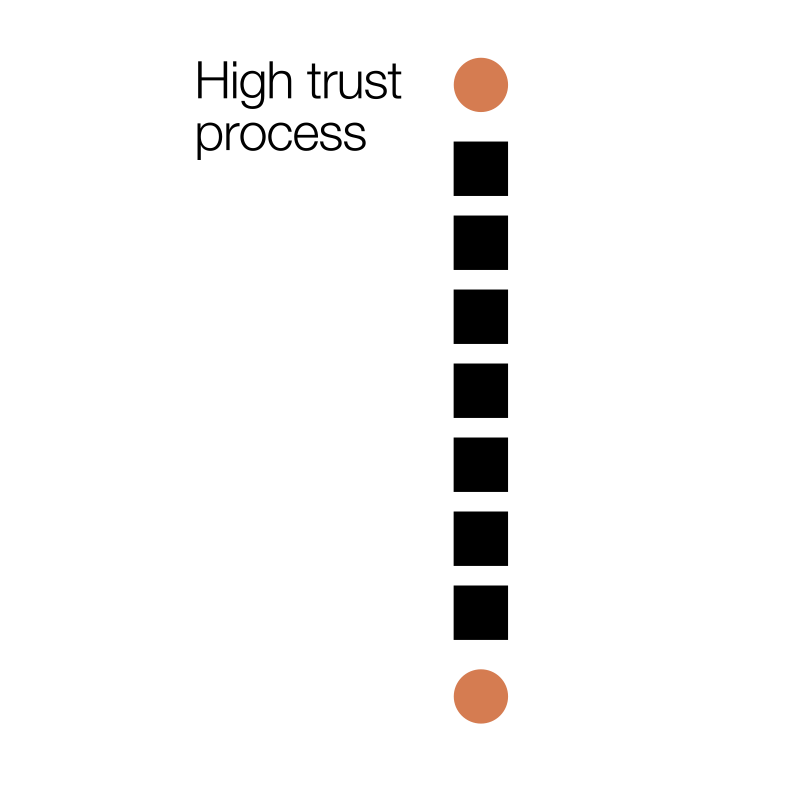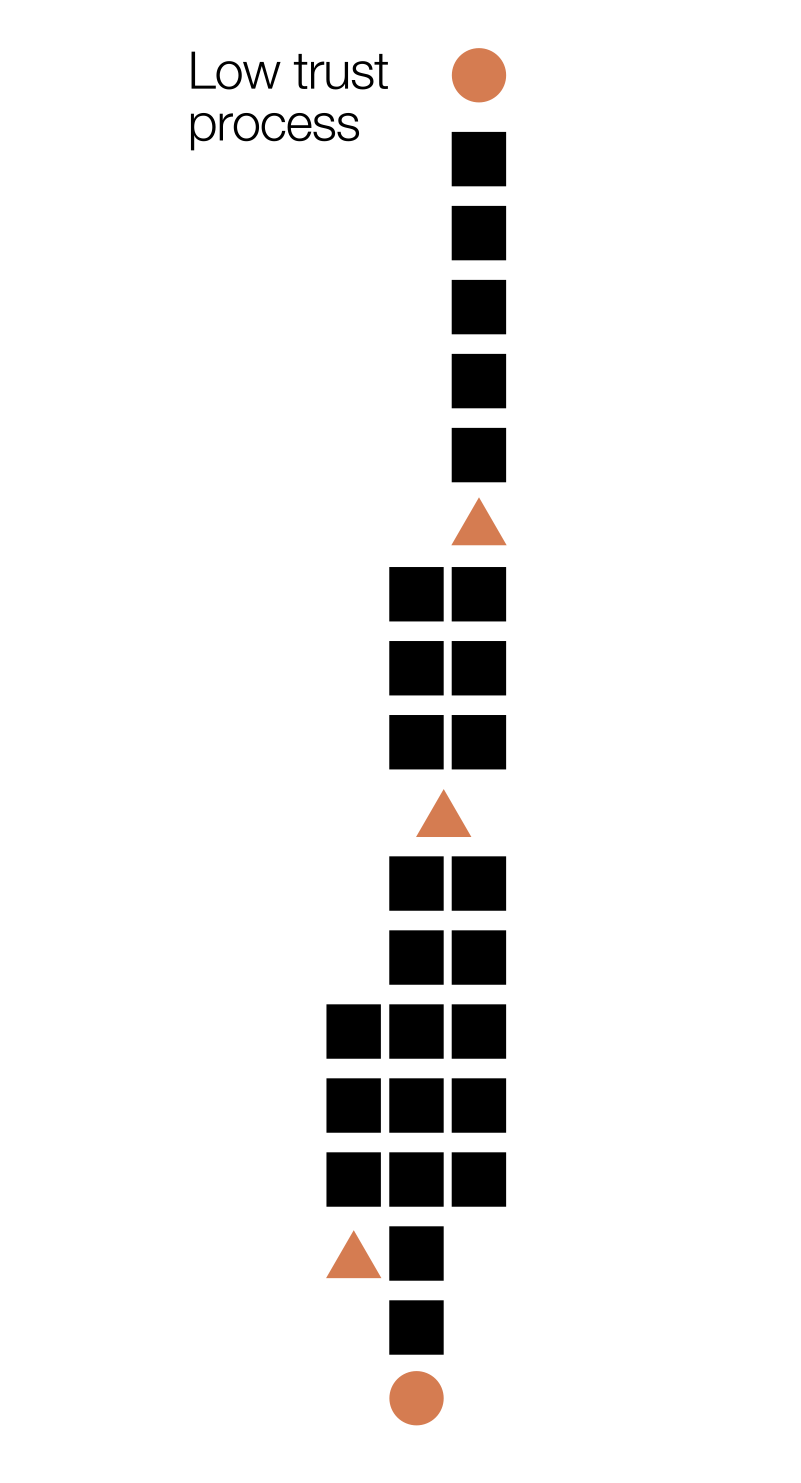Trust and psychological safety are often thought of as “soft” topics – but they have very “hard” impacts, and show up all the time in our processes.
A high trust process looks something like this, pretty straight ahead right?
A low trust process on the other hand, meanders with lots of stops and starts, taking much longer as a result.
Google’s Observations on Trust:
In 2015, Google published the results of a 2-year study to identify the characteristics of highly performing teams. They expected to find a “recipe” that could be replicated across the organization: hire one Rhodes Scholar, two extroverts, one engineer who rocks at AngularJS, and a PhD in Social Psychology– and Bingo!
But that is not at all what they found.
Instead, they discovered that the top-performing teams consistently had the following five key dynamics, in descending order of importance:
Google’s Top 5 Characteristics of High-Performing Teams
- PSYCHOLOGICAL SAFETY: a level of trust such that team members felt they could be vulnerable with one another by expressing concerns or offering differing points of view without negative effects; and
- DEPENDABILITY: they could depend on one another; and
- STRUCTURE & CLARITY: the roles and responsibilities within the team were clear; and
- MEANING: the work was personally meaningful to them; and
- IMPACT: team members felt their work mattered and they were having a positive impact.
Amy Edmondson, a Harvard Business School Professor, has written and talked about the willingness to show vulnerability for the sake of team effectiveness. She calls it Psychological Safety, which she defines as “a shared belief that the team is safe for interpersonal risk-taking”. Such an environment allows for “voice” within the organization, which can translate into individual and organizational learning and development. She elaborates in this excellent video.
A 2017 Gallup poll found that only 3 in 10 employees felt that their opinions mattered. Gallup estimated that by moving the ratio to six in 10 employees, organizations could realize a 27% reduction in turnover, a 40% reduction in safety incidents, and a 12% increase in productivity.
While Trust and Psychological Safety are definitely intertwined (and to a large extent one feeds the other), they are slightly different concepts: think in terms of Trust being about “how much I believe others”, whereas Psychological Safety is about “how much slack I believe others will cut me”.
Similarly, the level of trust within an organization can also have a profound impact on productivity and its overall culture. Stephen M.R. Covey (Speed of Trust) talks of a “trust dividend” in organization where trust is high; and a “trust tax” where it is low. He proposes a relationship of:
High Trust = Lower Effort + Faster Speed of Delivery; and
Low Trust = Higher Effort + Slower Speed of Delivery.
Many people think that Trust is like Jell-o: you can see and feel it, but it is so squishy that you can’t really change it.
We think you can change it: by first defining it, and then adding a structure for evaluating its presence or absence, and taking actions based on this evaluation.
In this content area, we cover:
- The relationship between Psychological Safety and Trust
- The impact of low vs high Psychological Safety and/or Trust
- A Trust model that provides a framework and common language of the components of Trust
- How to self-evaluate (at the team and/or individual level) how trustworthy you appear to others and develop strategies to build Trust
- How to self-evaluate your team’s level of Psychological Safety and develop strategies to build Psychological Safety.
Rozovsky, J. (2015, November 17). The five keys to a successful Google team. re:Work https://rework.withgoogle.com/blog/five-keys-to-a-successful-google-team/
Edmondson, A. [Tedx (2014, May 4). Building a psychologically safe workplace [Video]. YouTube https://youtu.be/LhoLuui9gX8
Covey, S.M., Covey, S.R., Merrill, R.R. (2008). The Speed of Trust: The One Thing That Changes Everything. FranklinCovey. P. 13
Edmondson, Amy C. The Fearless Organization: Creating Psychological Safety in the Workplace for Learning, Innovation, and Growth. Hoboken, NJ: John Wiley & Sons, 2018, p. xvi





